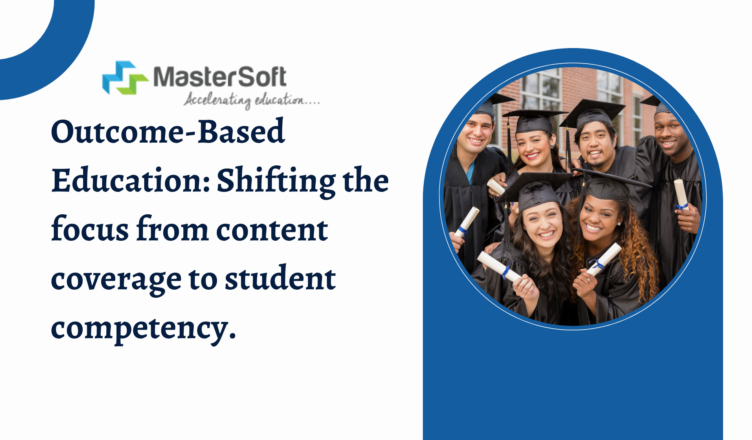For generations, the traditional education system has relied heavily on rote memorization and standardized tests. While these methods have their place, they often fail to equip students with the skills and knowledge necessary to thrive in the dynamic world of today. Enter outcome-based education (OBE), an innovative approach that shifts the focus from simply acquiring information to achieving specific learning outcomes. Let’s delve into the core principles of OBE and explore how it is transforming the educational landscape.
Unveiling Outcome-Based Education: A Student-Centered Approach
Outcome-based education (OBE) prioritizes clearly defined learning outcomes. These outcomes outline the specific knowledge, skills, and values that students are expected to acquire by the end of a course or program. Unlike traditional education, which often focuses on content coverage, OBE emphasizes the practical application of knowledge. This empowers students to become active participants in their learning journey, fostering critical thinking, problem-solving, and essential skill development.
Core Principles: The Pillars of OBE
Several key principles underpin the OBE philosophy:
- Clearly Defined Outcomes: The foundation of OBE lies in establishing clear and measurable learning outcomes aligned with broader educational goals and societal needs. These outcomes are communicated to students at the outset, allowing them to understand the learning objectives and track their progress.
- Student-Centered Learning: OBE moves away from teacher-centered lectures and encourages active student participation. Students engage in activities, projects, and discussions that allow them to demonstrate their understanding and develop essential skills.
- Assessment for Learning: Assessment in OBE is not merely a tool for grading, but rather a continuous process that provides valuable feedback for both students and educators. A variety of assessment methods are employed, from traditional tests to project presentations and portfolios, allowing instructors to gauge student progress toward the defined learning outcomes.
- Alignment Across the Curriculum: All aspects of the curriculum – from content and teaching methods to learning activities and assessments – are aligned with the established learning outcomes. This ensures a cohesive and focused learning experience for students.
Transforming Pedagogy: From Passive Learners to Active Participants
OBE necessitates a shift in teaching methodologies. Traditional lecture-based classrooms transform into dynamic learning environments where students are actively engaged in the learning process. Instructors become facilitators, guiding students on their journeys of discovery through interactive activities, collaborative projects, and real-world problem-solving exercises.
Benefits Galore: Empowering Students for the 21st Century
OBE offers a plethora of benefits for students:
- Deeper Understanding: Students move beyond rote memorization and develop a deeper comprehension of concepts. They are encouraged to critically analyze information, think independently, and apply their knowledge to solve problems.
- Essential Skill Development: The focus on student-centered learning fosters the development of crucial 21st-century skills – communication, collaboration, critical thinking, and problem-solving. These skills are highly sought after in the modern workplace and equip students for success in a rapidly changing world.
- Increased Engagement: Interactive and student-centered learning experiences keep students motivated and actively engaged in their education. This intrinsic motivation allows for deeper learning and a more fulfilling academic journey.
- Personalized Learning: OBE allows for some degree of personalization in the learning process. Instructors can tailor their teaching methods and assessments to cater to individual student needs and learning styles.
Embracing Challenges: Navigating the Road to Transformation
Implementing OBE requires careful planning and effort. Here are some challenges that need to be addressed:
- Faculty Development: Educators need adequate training and support to effectively implement OBE principles. This includes training on designing engaging learning activities, employing diverse assessment methods, and providing constructive feedback.
- Curriculum Redesign: Curriculums need to be re-evaluated and redesigned to align with clearly defined learning outcomes. This requires collaboration between educators, subject matter experts, and curriculum developers.
- Assessment Strategies: Developing a comprehensive assessment system that evaluates student achievement of diverse learning outcomes requires careful consideration.
Collaboration is Key: Building a Future-Ready Education System
OBE is not a standalone solution but rather a catalyst for systemic change. Collaboration between educators, administrators, policymakers, parents, and students is crucial for successful implementation. Sharing best practices, providing adequate resources, and continuously monitoring and refining the OBE approach are essential for creating a future-ready education system.
Conclusion: A Brighter Future for Education
Outcome-based education represents a paradigm shift in the way we approach learning. By prioritizing student-centered approaches, emphasizing real-world application, and focusing on clearly defined learning outcomes, OBE empowers students to become lifelong learners and active participants in their own educational journey. As we continue to embrace and refine this innovative approach, we can cultivate a generation of well-rounded individuals equipped to tackle the challenges and opportunities of the 21st century and beyond.

